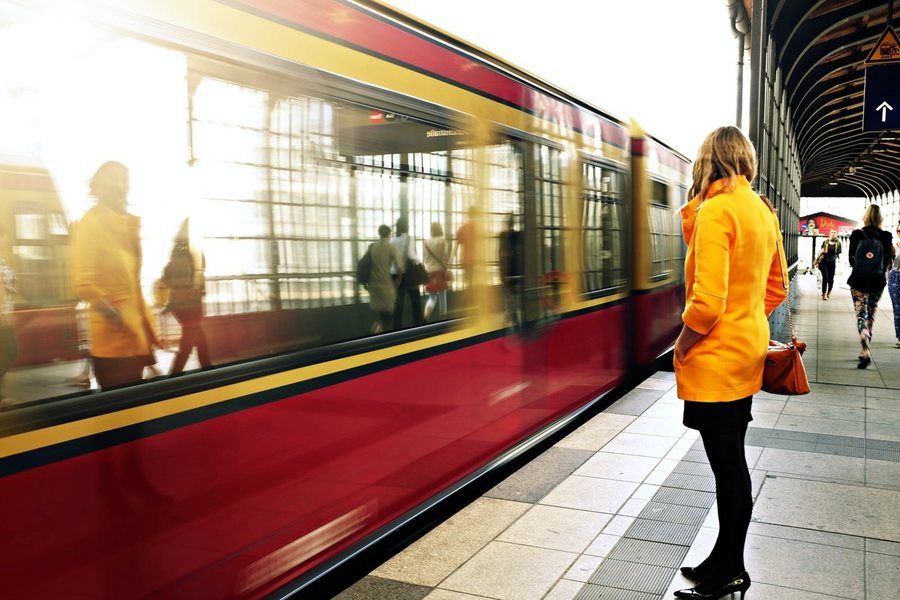Europe chooses fast trains - High-speed network doubled in the last decade

The EU's high-speed rail network has almost doubled in a decade, according to official figures. Lines carrying trains at 250 km/h and above ran 8,556 km across the continent in 2023, according to Eurostat. This figure has increased significantly from 5,812 km in 2013.
However, the bloc's overall rail network shrank by 1.3 percent over this period, stretching to just 200,947 km in 2023. "Europe is not upgrading its railways fast enough," warns the Transport & Environment (T&E) group.
The Czech Republic has the densest railway network in Europe, with 123.2 meters of railway track per square kilometer. Almost all of its lines were built under the monarchy from the nineteenth century onwards. They were later taken over by the communist regime, which gave priority to rail transport over roads. Belgium comes in second place, with 119.2 m/km², followed by Germany (109.5 m/km²).
According to Eurostat's analysis, the countries with the highest rail network densities are all located in central northern Europe, reflecting both their population density and high freight transport. On the other hand, the lowest rail network densities were found in Greece (14.0 m/km²) and Finland (19.4 m/km²), which also has the lowest population density in the EU.
Within the European Union, high-speed rail lines often cross national borders. This network has seen significant growth, increasing by 47 percent in the last decade.
Spain ranks first with 3,190 km of high-speed lines, a 66 percent increase from 2013. Madrid has been the largest beneficiary of EU funds for high-speed rail between 2000 and 2017, receiving almost half of the funding provided for the entire bloc.
However, this is also a result of very low construction costs, compared to other countries. France is the furthest behind with 2,748 km of high-speed lines, an increase of 35 percent since 2013. It is followed by Germany with 1,163 km and Italy with 1,097 km.

Growth plan, how is the EU's 1 billion euros allocated for 3 years? - 5 sectors that benefit. From businesses to strengthening human capital
Albania will benefit from nearly 1 billion euros by 2027 from the European Union as part of the Growth Plan for the Western Balkans, which will go towards......

6.7 billion euros over the next two years – Why is Denmark significantly increasing defense spending?!
Denmark will spend an additional 50 billion kroner (6.7 billion euros) on defense over the next two years, amid the continuing threat that Russia poses to......

Albania advances on the path towards the EU - Gonxhja: Group chapters 2 and 3 of the negotiations are opened!
The Minister of Economy, Culture and Innovation, Blendi Gonxhja, announced today through a post on social networks that Albania is advancing on the path......

The Murriz Tunnel on Arbri Street – Rama: Ready in March!
Prime Minister Edi Rama, during a conversation with citizens on social networks in the "Sy m'sy" column, declared today that the Murriz tunnel on Arbri......

1000 wheelchairs donated to para-tetraplegics - Samir Mane: I'm sure this is just the first step
In Tirana, at the "Asllan Rusi" Sports Palace, the Mane Foundation and the "Fundjava Ndryshe" Foundation started the initiative to distribute 1,000......

How much are the major currencies being exchanged today?
The European currency was bought today at 98.9 lek and sold at 99.6 lek, gaining points from yesterday as it started the day on the rise according to the......

Leasing and tourism, a winning combination - The tool that is helping car rental companies grow
“Leasing” has become a key tool for the development of the car rental sector in Albania. Leasing is a form of long-term rental, where a company offers an......

January 2025, tax revenues 5.4 million lek more than planned - Taxes: Positive performance, 15% more revenue than a year ago
January of this year has been successful for the General Directorate of Taxes. Referring to the latest data, the General Directorate of Taxes announces that......





















